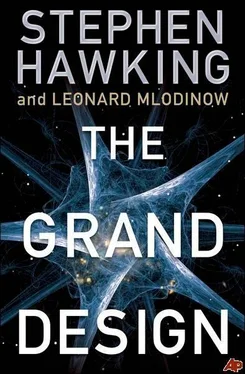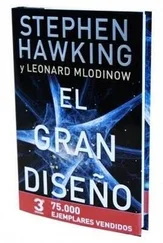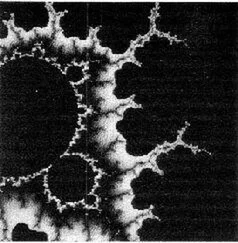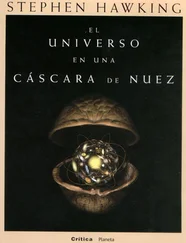What can we make of these coincidences? Luck in the precise form and nature of fundamental physical law is a different kind of luck from the luck we find in environmental factors. It cannot be so easily explained, and has far deeper physical and philosophical implications. Our universe and its laws appear to have a design that both is tailor-made to support us and, if we are to exist, leaves little room for alteration. That is not easily explained, and raises the natural question of why it is that way.
Many people would like us to use these coincidences as evidence of the work of God. The idea that the universe was designed to accommodate mankind appears in theologies and mythologies dating from thousands of years ago right up to the present. In the Mayan Popol Vuh mythohistorical narratives the gods proclaim, “We shall receive neither glory nor honor from all that we have created and formed until human beings exist, endowed with sentience.” A typical Egyptian text dated 2000 BC states, “Men, the cattle of God, have been well provided for. He [the sun god] made the sky and earth for their benefit.” In China the Taoist philosopher Lieh Yü-K’ou (c. 400 BC) expressed the idea through a character in a tale who says, “Heaven makes the five kinds of grain to grow, and brings forth the finny and the feathered tribes, especially for our benefit.”
In Western culture the Old Testament contains the idea of providential design in its story of creation, but the traditional Christian viewpoint was also greatly influenced by Aristotle, who believed “in an intelligent natural world that functions according to some deliberate design.” The medieval Christian theologian Thomas Aquinas employed Aristotle’s ideas about the order in nature to argue for the existence of God. In the eighteenth century another Christian theologian went so far as to say that rabbits have white tails in order that it be easy for us to shoot them. A more modern illustration of the Christian view was given a few years ago when Cardinal Christoph Schönborn, archbishop of Vienna, wrote, “Now, at the beginning of the 21st century, faced with scientific claims like neo-Darwinism and the multiverse [many universes] hypothesis in cosmology invented to avoid the overwhelming evidence for purpose and design found in modern science, the Catholic Church will again defend human nature by proclaiming that the immanent design in nature is real.” In cosmology the overwhelming evidence for purpose and design to which the cardinal was referring is the fine-tuning of physical law we described above.
The turning point in the scientific rejection of a human-centered universe was the Copernican model of the solar system, in which the earth no longer held a central position. Ironically, Copernicus’s own worldview was anthropomorphic, even to the extent that he comforts us by pointing out that, despite his heliocentric model, the earth is almost at the universe’s center: “Although [the earth] is not at the center of the world, nevertheless the distance [to that center] is as nothing in particular when compared to that of the fixed stars.” With the invention of the telescope, observations in the seventeenth century, such as the fact that ours is not the only planet orbited by a moon, lent weight to the principle that we hold no privileged position in the universe. In the ensuing centuries the more we discovered about the universe, the more it seemed ours was probably just a garden-variety planet. But the discovery relatively recently of the extreme fine-tuning of so many of the laws of nature could lead at least some of us some back to the old idea that this grand design is the work of some grand designer. In the United States, because the Constitution prohibits the teaching of religion in schools, that type of idea is called intelligent design, with the unstated but implied understanding that the designer is God.
That is not the answer of modern science. We saw in Chapter 5 that our universe seems to be one of many, each with different laws. That multiverse idea is not a notion invented to account for the miracle of fine-tuning. It is a consequence of the no-boundary condition as well as many other theories of modern cosmology. But if it is true, then the strong anthropic principle can be considered effectively equivalent to the weak one, putting the fine-tunings of physical law on the same footing as the environmental factors, for it means that our cosmic habitat-now the entire observable universe-is only one of many, just as our solar system is one of many. That means that in the same way that the environmental coincidences of our solar system were rendered unremarkable by the realization that billions of such systems exist, the fine-tunings in the laws of nature can be explained by the existence of multiple universes. Many people through the ages have attributed to God the beauty and complexity of nature that in their time seemed to have no scientific explanation. But just as Darwin and Wallace explained how the apparently miraculous design of living forms could appear without intervention by a supreme being, the multiverse concept can explain the fine-tuning of physical law without the need for a benevolent creator who made the universe for our benefit.
Einstein once posed to his assistant Ernst Straus the question “Did God have any choice when he created the universe?” In the late sixteenth century Kepler was convinced that God had created the universe according to some perfect mathematical principle. Newton showed that the same laws that apply in the heavens apply on earth, and developed mathematical equations to express those laws that were so elegant they inspired almost religious fervor among many eighteenth-century scientists, who seemed intent on using them to show that God was a mathematician.
Ever since Newton, and especially since Einstein, the goal of physics has been to find simple mathematical principles of the kind Kepler envisioned, and with them to create a unified theory of everything that would account for every detail of the matter and forces we observe in nature. In the late nineteenth and early twentieth century Maxwell and Einstein united the theories of electricity, magnetism, and light. In the 1970s the standard model was created, a single theory of the strong and weak nuclear forces, and the electromagnetic force. String theory and M-theory then came into being in an attempt to include the remaining force, gravity. The goal was to find not just a single theory that explains all the forces but also one that explains the fundamental numbers we have been talking about, such as the strength of the forces and the masses and charges of the elementary particles. As Einstein put it, the hope was to be able to say that “nature is so constituted that it is possible logically to lay down such strongly determined laws that within these laws only rationally completely determined constants occur (not constants, therefore, whose numerical value could be changed without destroying the theory).” A unique theory would be unlikely to have the fine-tuning that allows us to exist. But if in light of recent advances we interpret Einstein’s dream to be that of a unique theory that explains this and other universes, with their whole spectrum of different laws, then M-theory could be that theory. But is M-theory unique, or demanded by any simple logical principle? Can we answer the question, why M-theory?


***

IN THIS BOOK WE HAVE DESCRIBED how regularities in the motion of astronomical bodies such as the sun, the moon, and the planets suggested that they were governed by fixed laws rather than being subject to the arbitrary whims and caprices of gods and demons. At first the existence of such laws became apparent only in astronomy (or astrology, which was regarded as much the same). The behavior of things on earth is so complicated and subject to so many influences that early civilizations were unable to discern any clear patterns or laws governing these phenomena. Gradually, however, new laws were discovered in areas other than astronomy, and this led to the idea of scientific determinism: There must be a complete set of laws that, given the state of the universe at a specific time, would specify how the universe would develop from that time forward. These laws should hold everywhere and at all times; otherwise they wouldn’t be laws. There could be no exceptions or miracles. Gods or demons couldn’t intervene in the running of the universe.
Читать дальше















